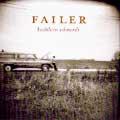Failer Succeeds!
For once, all of the hype is justified: Kathleen Edwards is a genuine, fully formed musical force. Failer, her debut, delivers everything one could want from a record except great sound, but that one failing will not interfere with the pleasures to be derived from this 10-song gem recorded on a shoe-string budget. The 24-year-old Canadian mid-tempo rocker/singer/songwriter has been compared to Lucinda Williams, but Neil Young backed by Crazy Horse is more apt in my book.
The classically trained violinist and daughter of a diplomat doesn't pull punches in her lyrics: she serves her tales of lovers, losers, and alcohol straight-up and with a wistful toughness that's immediately ingratiated and always believable. Repeated plays only add to the pleasure, as the muscular buzz-guitar-driven arrangements sort themselves out in your ears and reveal layers of buried musical treasure.
Norah Jones seduces with "Come away with me"; Edwards asks "Wanna go get high?"
Tough-talking chicks can sound forced and phony, but Edwards' 3D characters and straightforward narratives ring true, thanks to both the unforced wordplay and her reedy yet creamy voice. Edwards is plenty tough, but she's willing to show her vulnerability too.The beats are insistent but never plodding, and forward motion is always at the root of everything said or played--especially Jim Bryson's square-wave electric guitar, which provides constant pleasures throughout. Also notable are the subtle string arrangements, which fill spaces--emotional and physical--admirably.
"One More Song the Radio Won't Like" (which clearly isn't about any of the 10 here) serves up a droll slice of the music biz ("bad debts and dirty laundry") with manager-targeted lines like "Write a hit so I can talk you up/No one likes a girl who won't sober up." "The Lone Wolf" will haunt you long after you've muted your stereo, as will other of Edwards' elegantly turned melodies.
About the sound: it's "serviceable," and if that's the best it can be after Greg Calbi's had a swipe at it, you know that the raw material must have been pretty raw. The problem is a hazy, gauzy overlay, and too much crowding in the upper midband frequencies, with mushy bass below. There's so little in the way of harmonic color to be gleaned from the mix, it almost sounds black and white. However, the intentions of the production people involved were pure and the limitations were more technical than aesthetic, so it's easy to look beyond the problems.
Let's hope the future for Kathleen Edwards is as bright as this stunning debut. Highly recommended.



